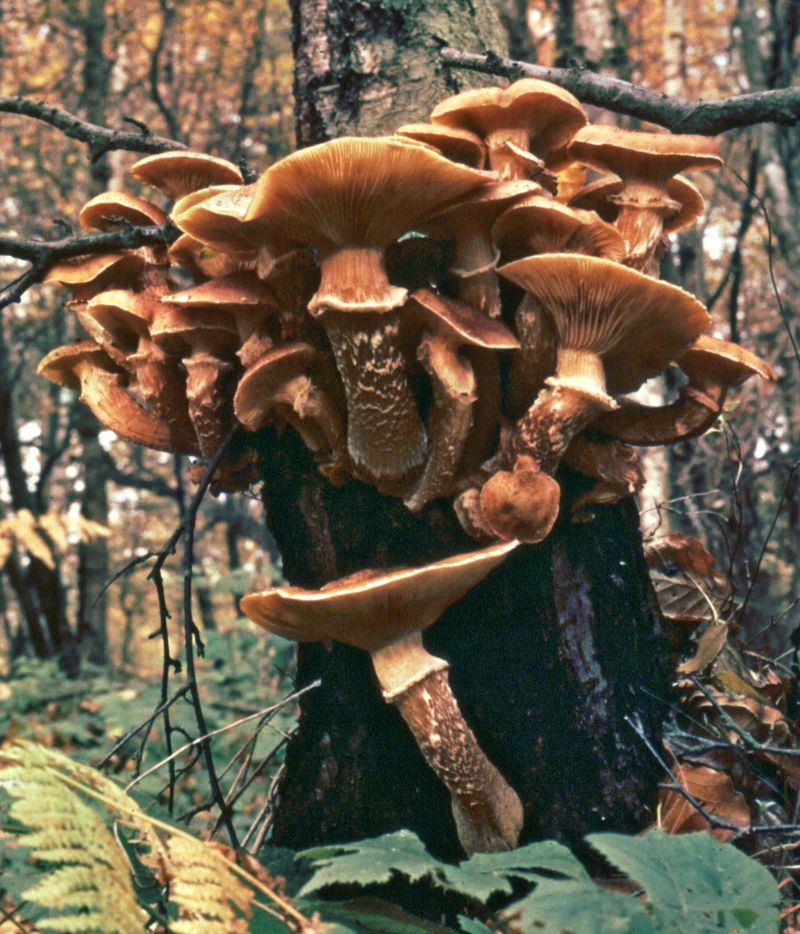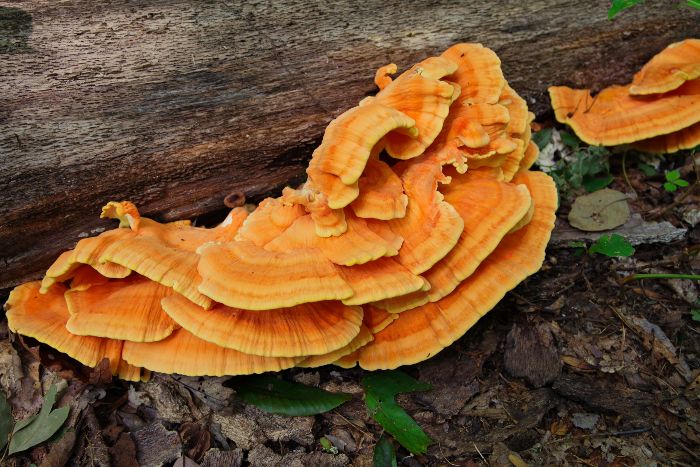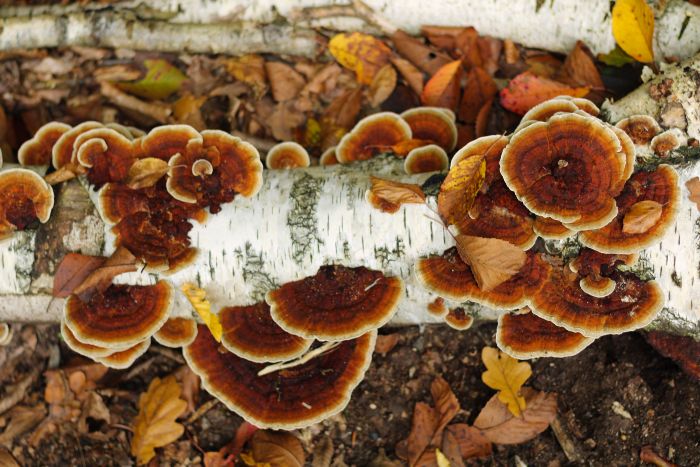During and after the rainy season, it’s common to see mushrooms popping out on and near trees. Are these fungi friends or foes? Are they bad for your tree, and what can you do about them? Read on to find out.
Why Do Mushrooms Grow on Trees?
Mushrooms are the visible fruiting bodies or reproductive structures of fungi. Spores are produced in these mushrooms and then spread via wind or water to grow into new fungi, which play important roles in the ecosystem by decomposing organic matter. Trees provide an abundant food source for fungi, as they contain cellulose and lignin, carbohydrate-rich components that fungi break down for sustenance. When conditions are right, such as high humidity, moderate temperatures, and nutrient availability, fungi thrive. As they grow, they produce mushrooms on tree trunks, branches, and surrounding soil to perpetuate their species.
Are Mushrooms a Bad Sign For Your Trees?
While the appearance of mushrooms on trees may raise concerns, it’s not always an indication of immediate danger. Check out our blog on Fungi – the Good, the Bad, and the Ugly. However, mushrooms can be a sign of underlying issues with the tree’s health. They often colonize trees that are already weakened or decaying, as these conditions provide an ideal environment for fungal growth. Some tree species have a high likelihood of failure when mushrooms show up, while others can last for several years after being colonized by mushrooms.
How Can Tree Fungus Damage Your Trees?
Tree fungus can pose various threats to tree health. Fungi that invade trees can weaken their structural integrity by breaking down wood tissues, leading to rot and decay. This can compromise the stability of the tree, making it susceptible to wind damage or even collapse. Additionally, some fungi can cause diseases that further harm the tree’s overall health.
What Kind of Mushrooms Grow on Trees?
There are numerous types of mushrooms that may be found growing on or near trees. They are often categorized by the shape of their fruiting body, such as cap, shelf, and puffball. While some are harmless, others can cause significant damage. Understanding the characteristics of different mushroom species can help identify potential risks to tree health.
Mushrooms That We Should Prevent
Among the mushrooms that grow on trees, there are certain species that arborists and homeowners should be particularly cautious of. These mushrooms are known for their destructive impact on trees and should be addressed promptly to mitigate damage. Here are a few examples:
Honey Fungus
Honey Fungus (Armillaria spp.): Identified by clusters of honey-colored mushrooms, this fungus attacks the roots of a wide range of tree species. It can cause root rot, leading to decline and eventual death of the tree.

Chicken of the Woods
Chicken of the Woods (Laetiporus spp.): Characterized by bright yellow or orange bracket-like structures, this fungus primarily targets hardwood trees. While it doesn’t typically cause extensive damage, it can contribute to decay in already weakened trees.

Ganoderma Spp
Ganoderma spp.: Often referred to as shelf or bracket fungi, species within the Ganoderma genus can cause white rot in trees, breaking down both lignin and cellulose. As a result, the wood turns soft, spongy, and yellow or white in color, hence the name. These fungi can cause significant structural damage, posing risks to tree stability.

How Arborists Treat Trees With Mushrooms Growing on Them?
When mushrooms are detected on trees, consulting with a certified arborist is advisable. Arborists can assess the extent of fungal infection and recommend appropriate treatment measures. Depending on the severity of the infestation and the tree’s condition, treatment options may include pruning infected areas, improving tree health through fertilization and proper watering, or in severe cases, tree removal.
How To Prevent Mushrooms And Fungal Tree Growth?
Prevention is key to minimizing the risk of fungal growth on trees. Maintain good tree health by monitoring for and preventing pests and diseases. Use proper tree care practices, such as regular pruning to remove dead or diseased branches, promoting good soil drainage, and avoiding injuries to tree trunks. Also, avoid overwatering and ensure proper air circulation around trees to discourage fungi by creating environments unfavorable to their growth. By being proactive and implementing preventative measures, you can help maintain tree health and reduce susceptibility to fungal infections.





